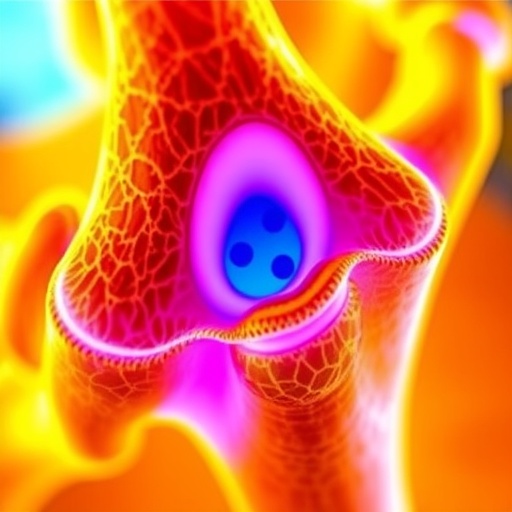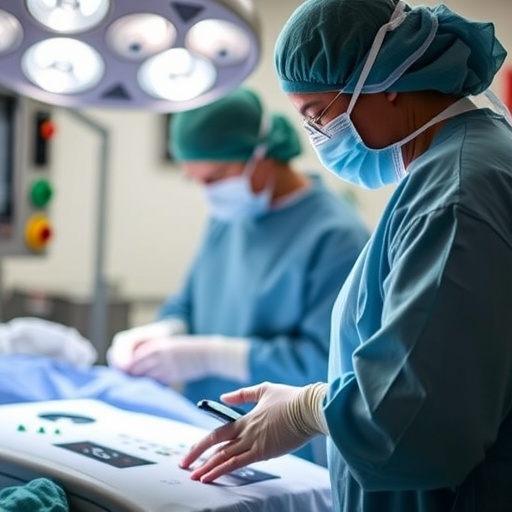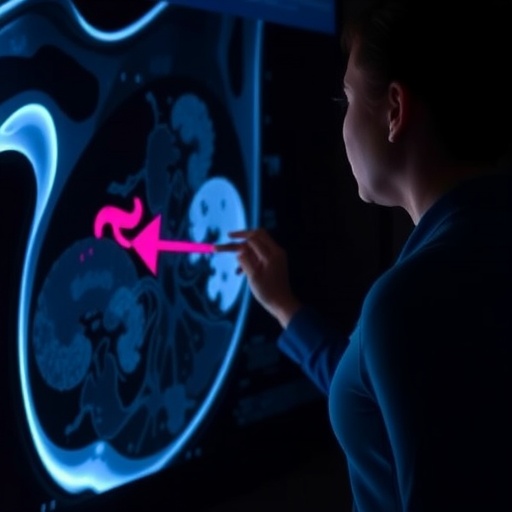In a groundbreaking advancement set to reshape regenerative medicine, a team of researchers led by Li, W., Shi, Z., Jing, H., and colleagues have developed a novel metal-based hydrogel that dramatically enhances stem cell differentiation and supports extracellular matrix homeostasis, ultimately facilitating effective cartilage repair. This pioneering study, recently published in Nature Communications, elucidates the remarkable therapeutic potential of a streamlined hydrogel system in treating cartilage injuries, which have long posed a significant clinical challenge due to the tissue’s limited self-healing capacity.
Cartilage damage, typically caused by trauma or degenerative diseases such as osteoarthritis, remains a major public health concern worldwide. Traditional treatments focus primarily on symptom management rather than regeneration, leaving patients with persistent pain and functional impairment. The team’s innovative hydrogel offers a new direction—actively repairing damaged cartilage by coaxing stem cells to differentiate into chondrocytes and restoring the intricate balance of the extracellular matrix (ECM), crucial for cartilage integrity.
At the core of this breakthrough lies the sophisticated design of the hydrogel, which integrates metal ions within a biocompatible polymeric network. Unlike conventional hydrogels, this metal-based scaffold provides tailored mechanical properties and bioactive signals that closely mimic the natural cartilage microenvironment. The incorporation of metal ions inspired by biological metal cofactors — known for their roles in enzymatic activity and cellular signaling — enables a controlled release of metal species that promote stem cell fate decisions toward chondrogenesis.
Beyond influencing stem cell differentiation, the hydrogel plays a pivotal role in maintaining extracellular matrix homeostasis. The ECM in cartilage is a complex, constantly remodeling network that provides structural support and biochemical cues to embedded cells. Disruption of this matrix leads to cartilage degradation and joint dysfunction. This innovative hydrogel fosters an environment that balances matrix synthesis and degradation by modulating the activity of matrix metalloproteinases (MMPs) and tissue inhibitors, thereby stabilizing the cartilage ECM and preventing further deterioration.
Animal studies conducted on male rats demonstrated the hydrogel’s impressive capacity to promote cartilage repair in vivo. Implantation of the hydrogel at sites of cartilage injury resulted in significant improvements in tissue morphology, mechanical function, and pain mitigation compared to control groups. Histological analyses showed increased chondrocyte density and ECM integrity, confirming effective regeneration. These findings emphasize the translational promise of this technology for clinical applications in human cartilage repair.
The implications of this work extend beyond cartilage tissue engineering. The design principles underlying the metal-based hydrogel could be adapted for a wide array of regenerative therapies targeting different tissues where ECM homeostasis and stem cell function are critical. For instance, modifications of the hydrogel system may enhance bone regeneration, wound healing, or even neural tissue repair, showcasing its versatility.
Critical to the success of this approach is the nuanced understanding of metal ion dynamics within biological systems. Metals such as zinc, copper, and iron serve as essential cofactors in numerous enzymatic activities and signaling pathways. Their precise concentration and release kinetics within the hydrogel framework are finely tuned to avoid cytotoxicity while maximizing regenerative signaling. The study offers valuable insights into how bioinorganic chemistry can be harnessed to engage cell biology effectively, bridging materials science and regenerative medicine.
An equally notable feature is the hydrogel’s streamlined synthesis method, which prioritizes ease of fabrication and scalability. This economical and efficient production route enhances the prospects for eventual commercialization and clinical translation. The simple yet robust formulation process could enable widespread adoption in both research and clinical settings, accelerating the development of next-generation biomaterials for tissue engineering.
Furthermore, the research team employed advanced gene expression analyses to unravel the molecular mechanisms underpinning the hydrogel’s regenerative effects. Key chondrogenic markers such as SOX9, COL2A1, and ACAN were significantly upregulated following hydrogel treatment, underscoring its influence in guiding stem cell differentiation pathways. Equally important was the downregulation of inflammatory cytokines and catabolic enzymes, suggesting a dual regenerative and protective function of the hydrogel within the inflammatory milieu typical of cartilage injury.
The integration of mechanotransduction principles was another critical aspect of this study. The hydrogel’s mechanical properties were carefully matched to native cartilage tissue stiffness, ensuring that mechanical cues essential for chondrocyte phenotype maintenance were preserved. This biomimetic strategy not only improved cell fate outcomes but also contributed to the functional restoration of repaired tissue, a factor often overlooked in artificial scaffold design.
Looking forward, the authors note several avenues for further research to optimize the hydrogel system, including fine-tuning metal ion compositions and exploring synergistic effects with growth factors or gene therapies. Long-term studies are also warranted to assess the durability and safety of regenerated cartilage over time, particularly in larger animal models that better recapitulate human joint biomechanics.
This innovative work exemplifies the power of interdisciplinary collaboration, uniting materials science, bioengineering, cell biology, and clinical medicine to tackle one of the most stubborn challenges in regenerative healthcare. The metal-based hydrogel platform stands as a testament to how biomaterials can be designed not just to replace damaged tissue but to actively engage and modulate biological processes for lasting repair and functional recovery.
As the global population ages and the burden of musculoskeletal diseases escalates, advances like these provide hope for millions suffering from cartilage-related ailments. By enabling true tissue regeneration rather than mere symptom management, the metal-based hydrogel could herald a new era of personalized and effective orthopedic interventions.
The study by Li et al. offers a compelling glimpse into the future of regenerative therapies where smart biomaterials can direct stem cells and orchestrate ECM homeostasis with precision. If successful in clinical trials, this approach may revolutionize how we treat cartilage injuries, shifting paradigms from degenerative management to restoration of native tissue function.
In summary, this novel metal-based hydrogel represents a milestone in regenerative medicine, merging advanced material design with cellular and molecular insights to promote stem cell-driven cartilage repair. Its streamlined composition, bioactivity, and repair efficacy in male rats provide a strong foundation for future translational efforts that could ultimately improve quality of life for patients worldwide burdened by cartilage damage.
Subject of Research: Cartilage repair through metal-based hydrogel-mediated stem cell differentiation and extracellular matrix homeostasis.
Article Title: Streamlined metal-based hydrogel facilitates stem cell differentiation, extracellular matrix homeostasis and cartilage repair in male rats.
Article References:
Li, W., Shi, Z., Jing, H. et al. Streamlined metal-based hydrogel facilitates stem cell differentiation, extracellular matrix homeostasis and cartilage repair in male rats. Nat Commun 16, 4344 (2025). https://doi.org/10.1038/s41467-025-59725-y
Image Credits: AI Generated
Tags: biocompatible polymer networkscartilage repair innovationschondrocyte developmentclinical challenges in cartilage repairextracellular matrix homeostasishydrogel mechanical propertiesmetal-based hydrogelosteoarthritis treatment advancementsregenerative medicine breakthroughsstem cell differentiationtherapeutic potential of hydrogelstrauma-induced cartilage damage





